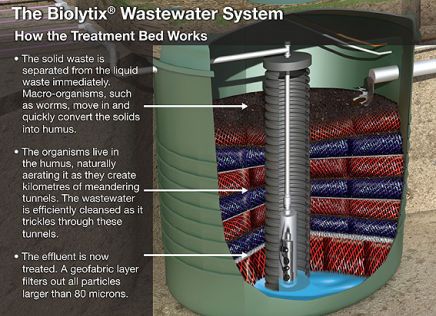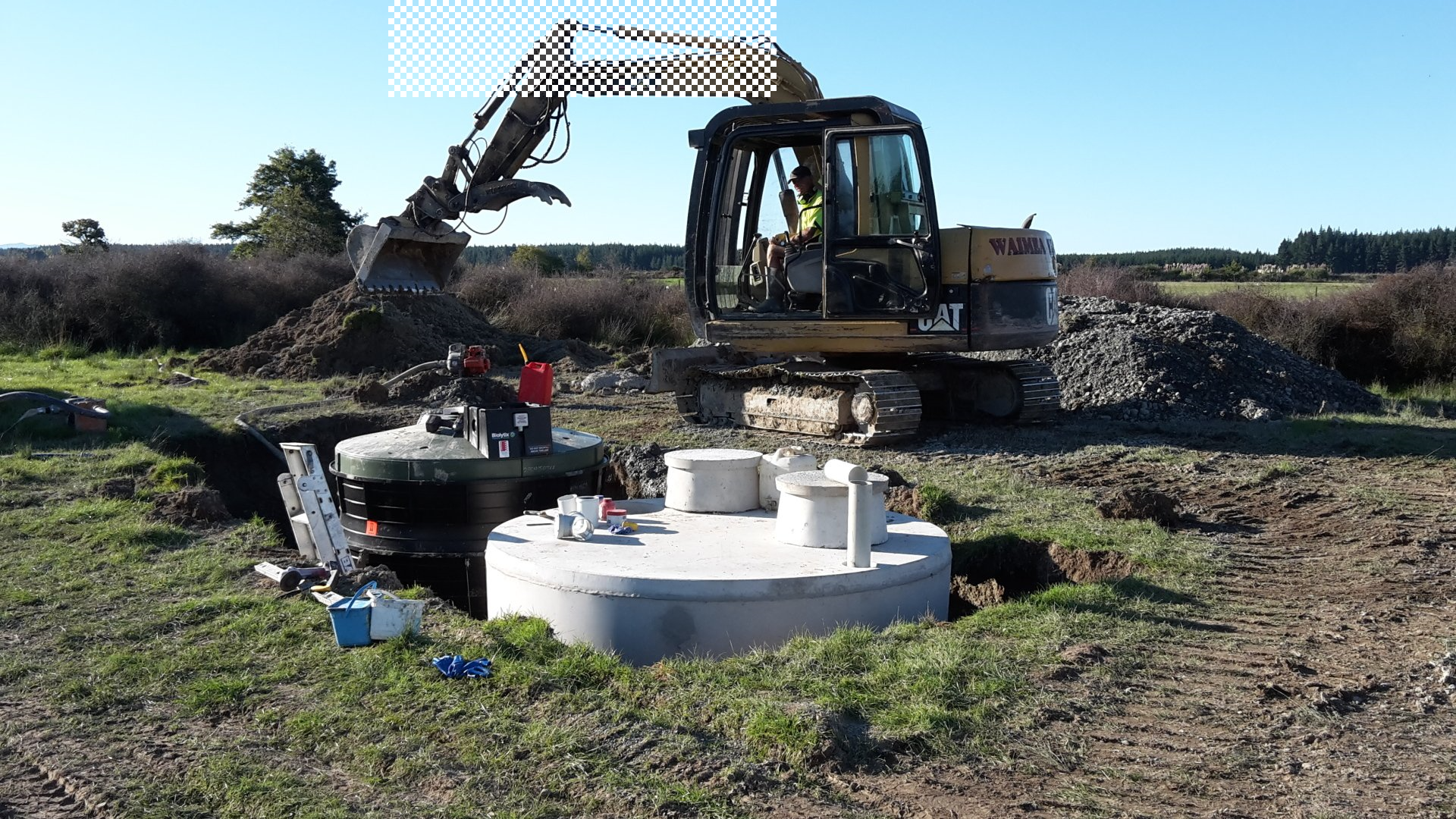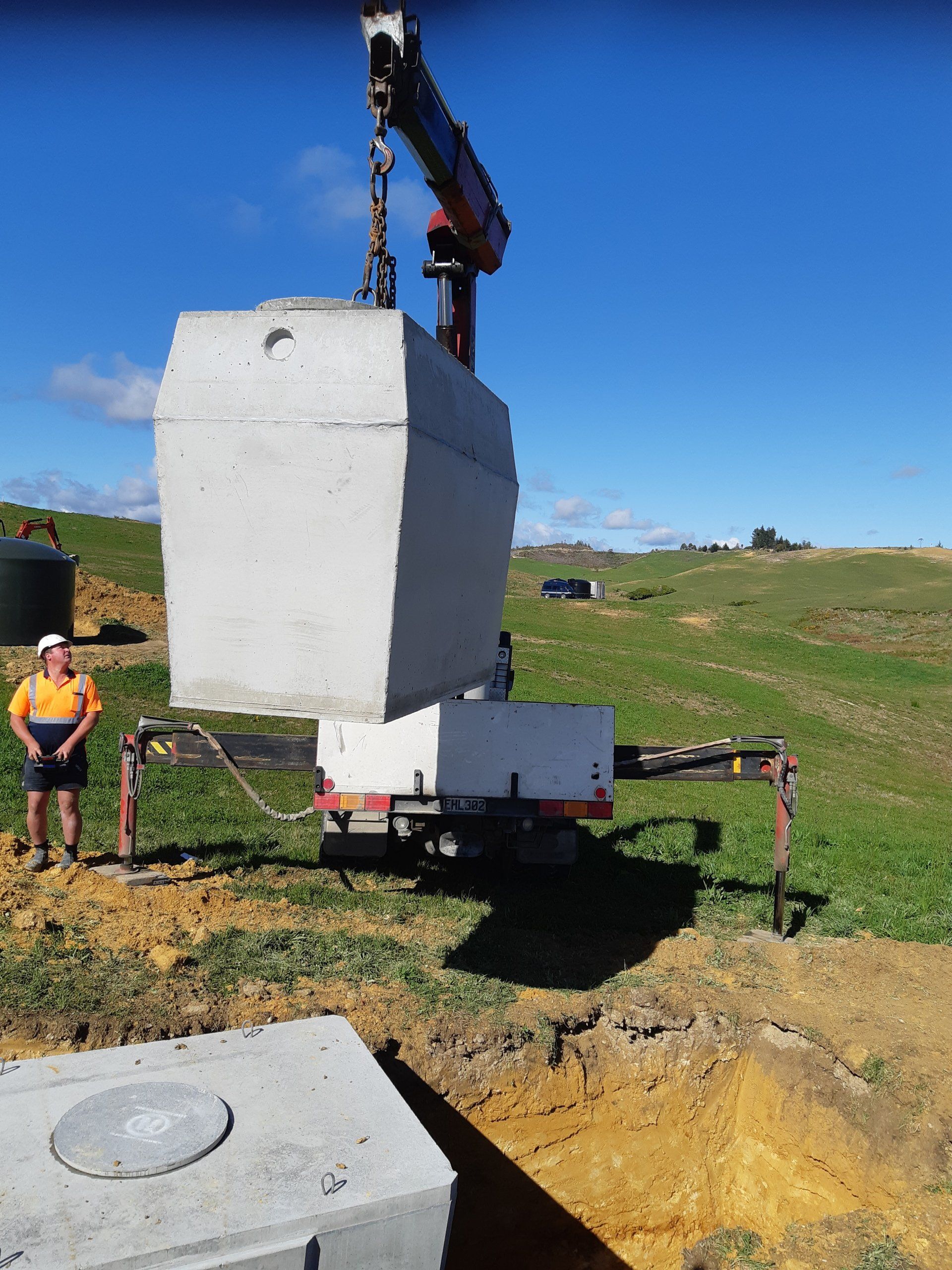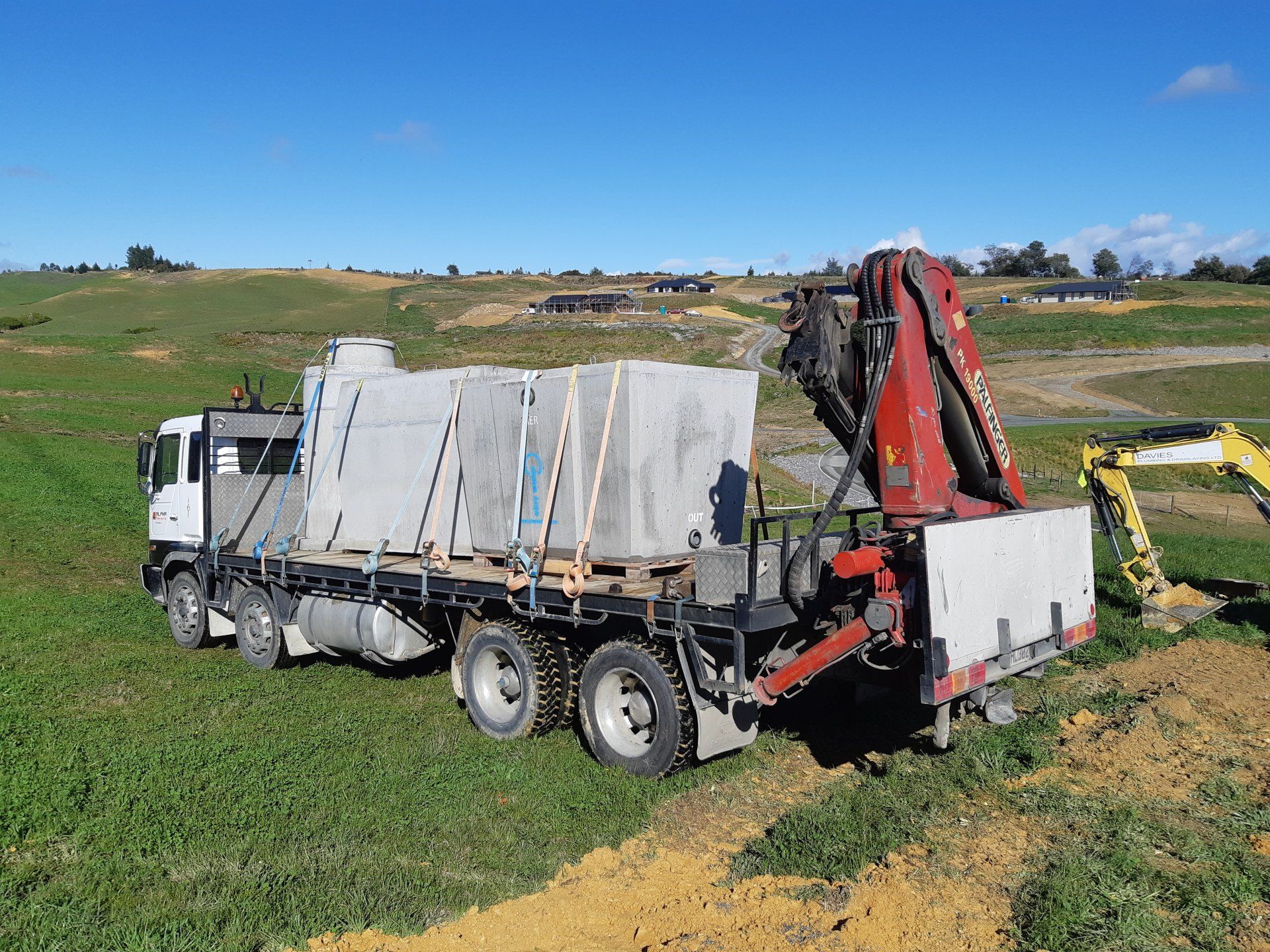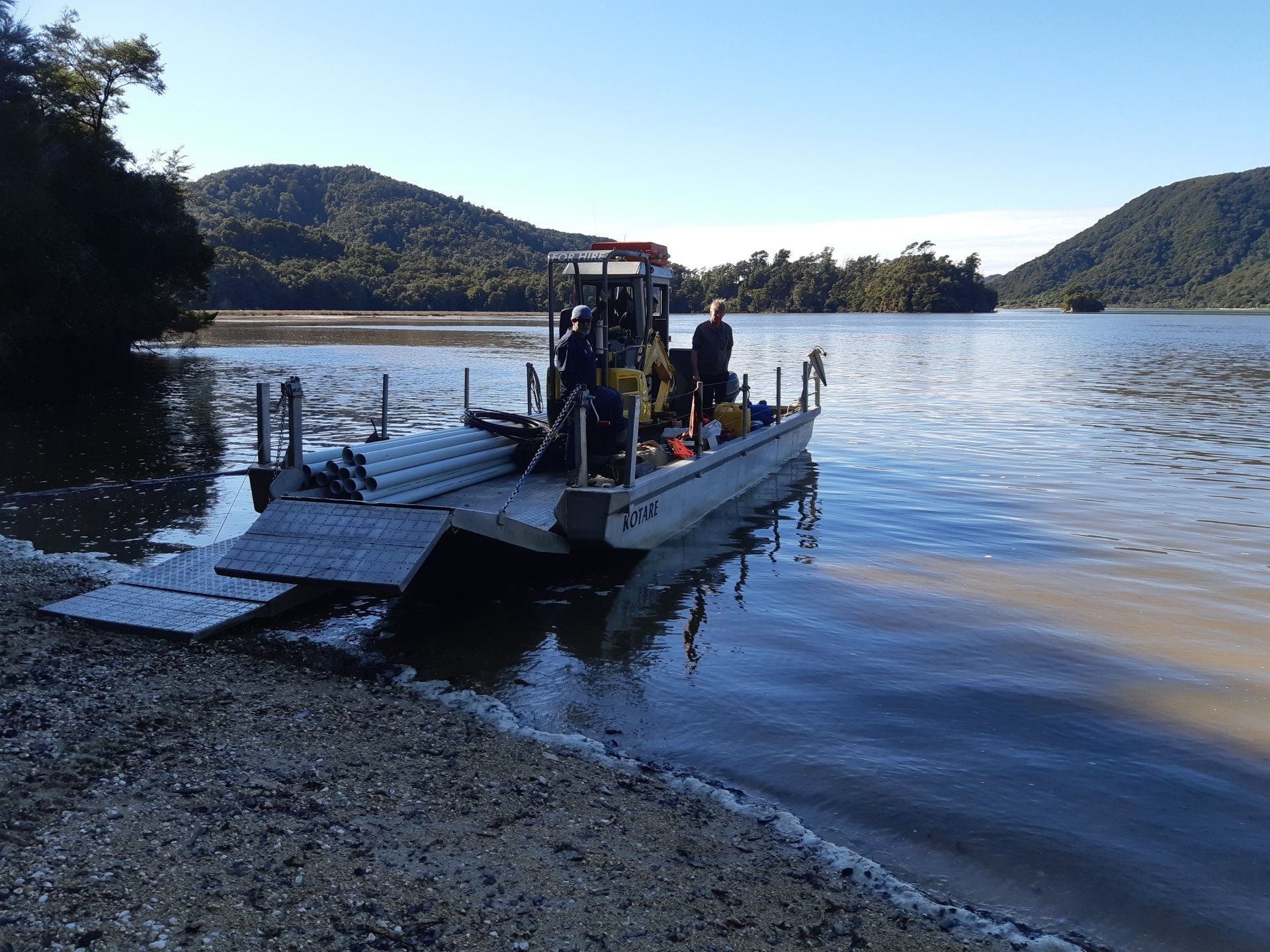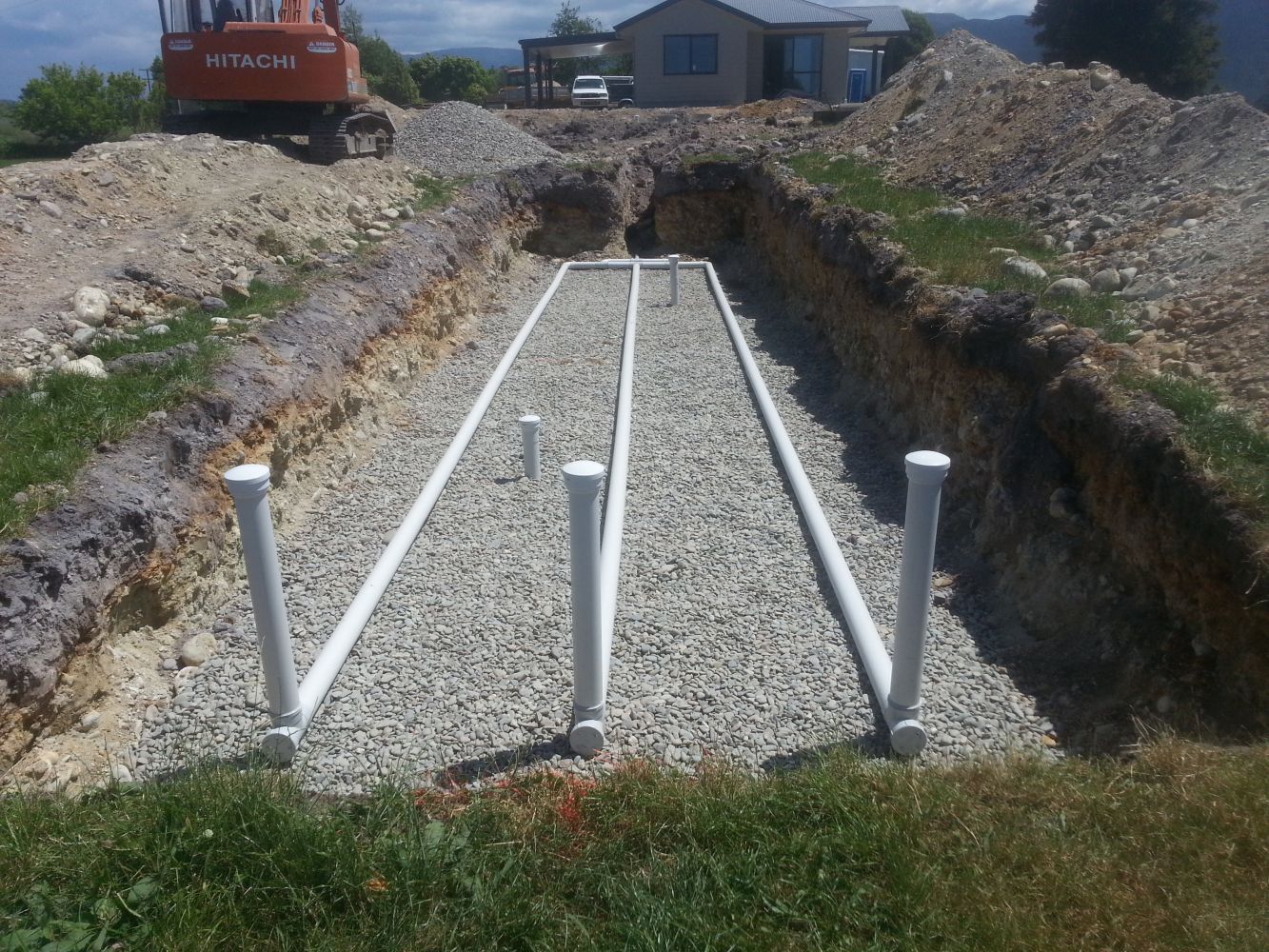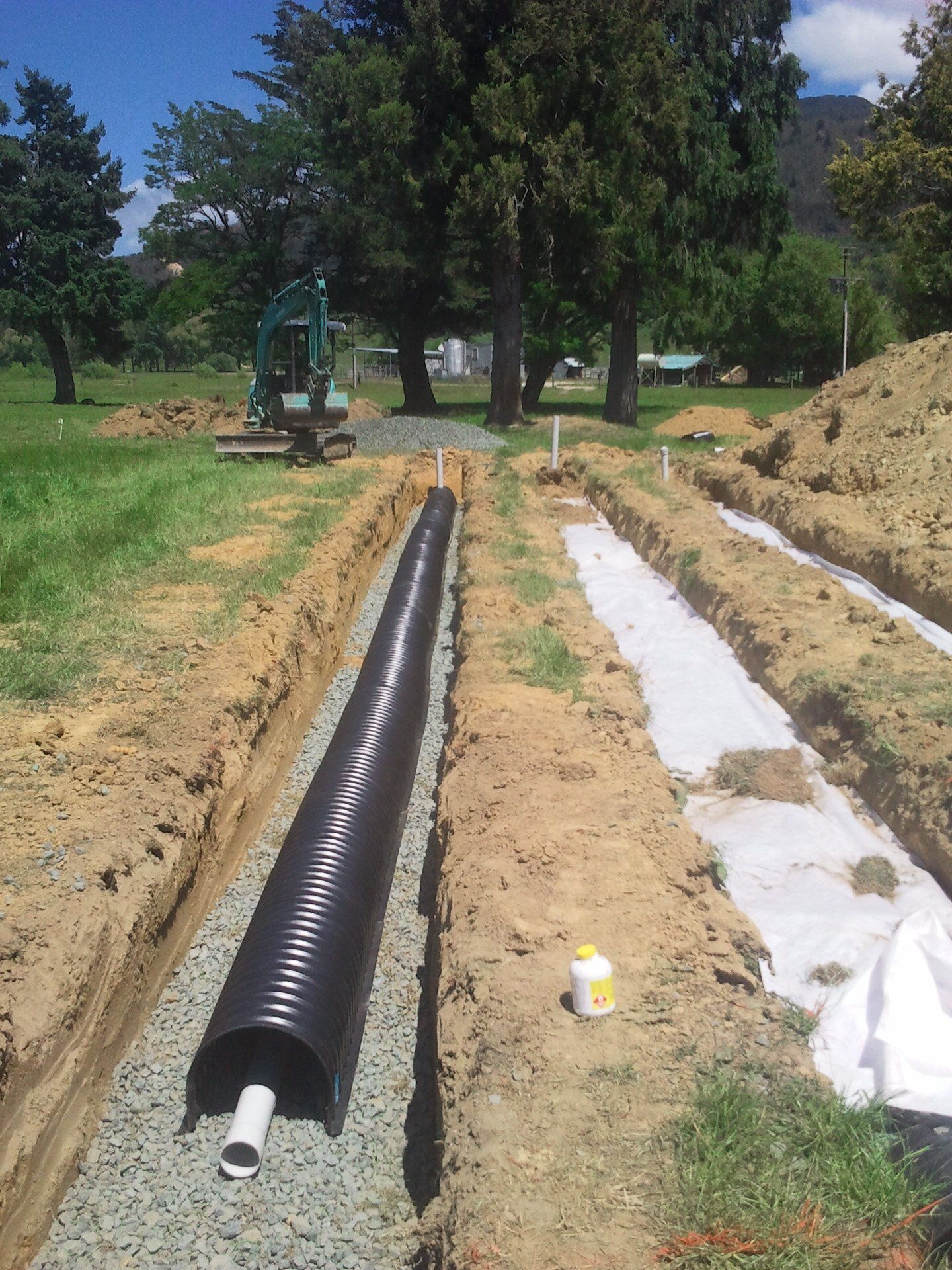HOW DOES A SEPTIC TANK WORK
The septic tank is a buried, water-tight container usually made of concrete, fiberglass, or polyethylene. Its job is to hold the wastewater long enough to allow solids to settle down to the bottom forming sludge, while the oil and grease floats to the top as scum.
Bacteria living in the septic tank break down some of the organic solids into liquid components, helping to reduce the build-up of sludge in the tank. The scum helps prevent odours escaping and stops air entering. The treated effluent flows out of the tank through an outlet pipe as new waste-water enters.
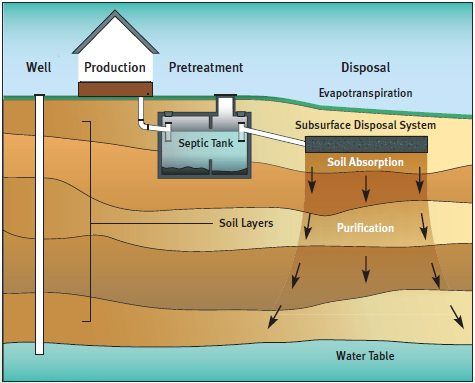
How does an Aerated Sewage Treatment System work?
It works by providing an environment where massive colonies of helpful bacteria can establish themselves, and by providing those bacteria with the food and oxygen that they require to thrive. The food on which these colonies thrive is the organic material contained in the waste outflow from the septic tank. In order to consume and process the inflow to the system, the bacteria colony requires a large amount of oxygen. This oxygen is introduced into the system using electrically driven pumps or blowers.
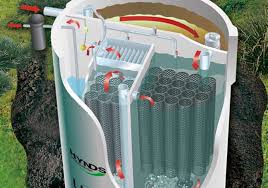
How does an BIolytix Sewage Treatment System work?
Unlike mechanical systems, Biolytix immediately separates the solid organic matter from the wastewater. Specialised organisms quickly convert the waste into humus. This humus acts as a huge lung, with an estimated 450 square kms of surface area per cubic metre. This oxygenates and cleanses the wastewater as it trickles through.
In a mechanical and septic system the problem (the waste) remains a problem.
In a Biolytix system the problem (the waste) is converted into an ongoing solution (the humus filter that cleanses the wastewater).
Oxygen for Life and Decomposition
In contrast to what is found in nature, mechanical wastewater systems are water-based. To drive decomposition in this oxygen-poor environment, they must use energy-intensive aerators to pump oxygen into the wastewater. Even so, only a few parts per million of oxygen is available.
In comparison, The BioPod contains oxygen-rich humus, creating the ideal environment for the Biolytic Process. Worms and other biolytic organisms can draw oxygen directly from the 21% available in the air.
In a conventional system often less than 5 parts oxygen per million available.
In a Biolytix System around 210,000 parts oxygen per million available.
Nature Does the Work
In mechanical systems, aerators and agitators pump air 12-24 hours per day to provide enough oxygen so that a limited range of aquatic organisms can survive to break down the waste.
The oxygen-rich Biolytix System can work without large mechanical aerators. (It only needs a tiny fish pump to keep the water that has been treated aerated.) Silently and continuously…. up to a million complex organisms per cubic centimetre process the waste.
In a mechanical system machinery works hard.
In a Biolytix system nature works hard.
